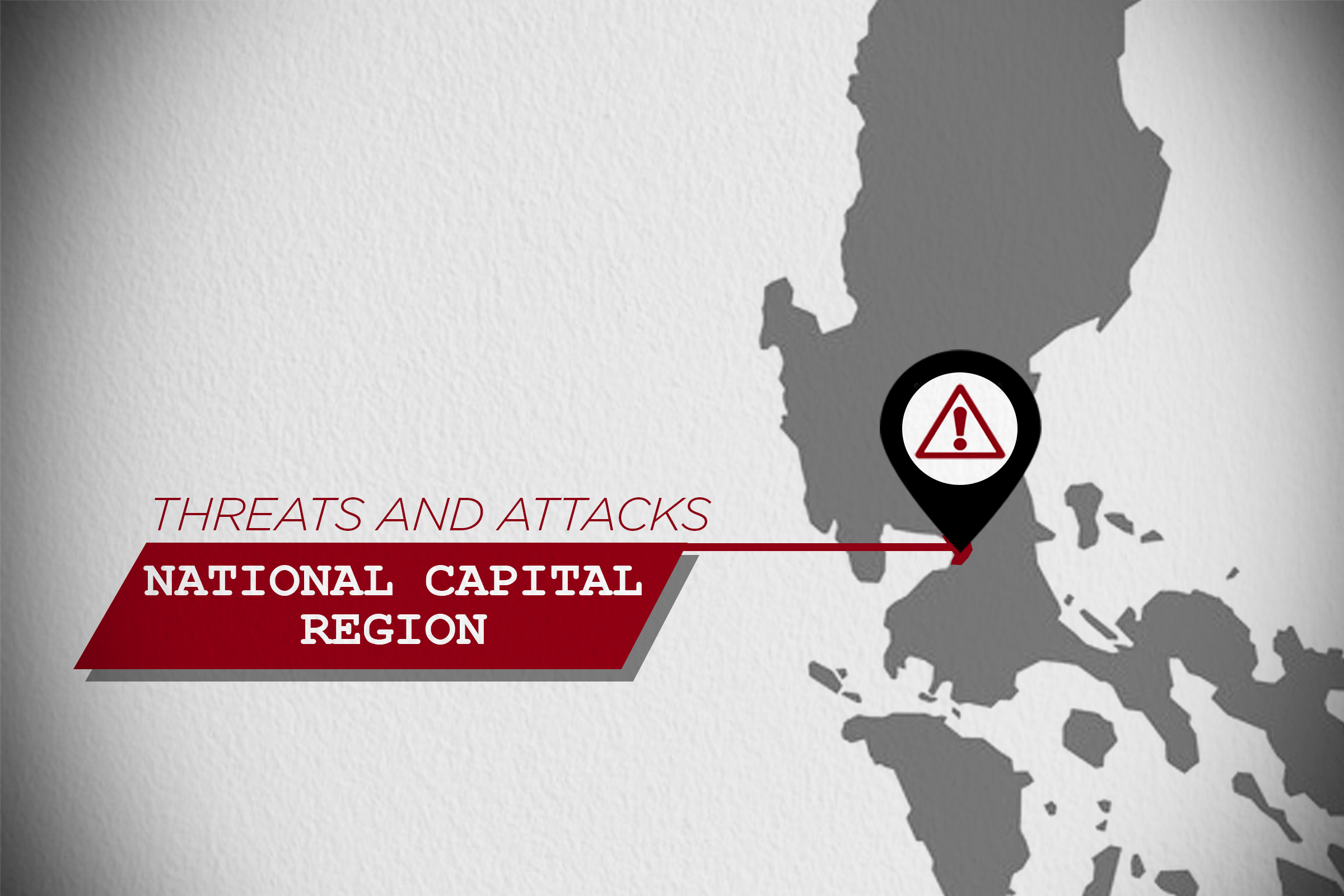Journalists Assaulted, Obstructed, and Exposed to Tear Gas During September 21 Manila Protest

CMFR/PHILIPPINES — Journalists covering the September 21 protests in Manila were assaulted, harassed, and obstructed as demonstrations escalated in Mendiola, Recto, and Ayala Bridge. The rallies, which marked the anniversary of Martial Law and called for accountability in the flood control corruption scandal, drew thousands but also ended in violence that left hundreds arrested and dozens injured.
Some members of media said they suffered injuries from police attacks directed at the press:
- Raffy Lerma, a photojournalist known for his coverage of the Duterte administration’s drug war, was at the frontlines of the Mendiola protests. He was exposed to tear gas and water cannons, sustaining minor injuries, including a cut near his eye and a leg wound. In a Rolling Stone Philippines article, Lerma said that his work has always treaded the line between bearing witness to and absorbing the trauma of violence.
- Ezra Acayan, a photojournalist, posted a photo of a SWAT officer wielding his baton and telling him to stop taking photos.
- Daniel Gio Caballes, a student from the Polytechnic University of the Philippines (PUP) covering the protests for their student council, who also contributes to student publications, was arrested and beaten by police at Mendiola. Bystander videos show Caballes being manhandled during the dispersal.
- Gary de Leon, a News5 reporter, was shouted at, cursed, and subjected to aggressive gestures by a group of demonstrators during a live broadcast in Mendiola. His report was interrupted, and he had to relocate to continue covering the protests safely.
- Manny Vargas, a dzBB broadcast journalist, was hit by a stone in the face while reporting the incident via Facebook Live.
- Zedrich Xylak Madrid was grabbed and hit by police while photographing dispersals in Mendiola. Witnesses reported that he was targeted despite clearly identifying himself as media.
- Lisa Marie David, a Reuters photojournalist, who captured the shot of Madrid being grabbed, said a police officer tried to stop her from taking pictures by pushing his riot shield at her and her camera.
- Chantal Eco, a freelance photojournalist and Bulatlat contributor, was exposed to tear gas and suffered stinging eyes and difficulty breathing. She documented the painful impact of tear gas on protesters and bystanders at a 7-11 store in Mendiola, including herself. Eco’s footage contradicts official police statements denying the deployment of tear gas.
Journalists said that police used shields not only for crowd control but to deliberately obstruct media coverage. Tear gas and water cannons were deployed near enough to where journalists were, risking direct harm to their safety.
Outside of Manila, student publications at Cagayan State University (CSU) – The CSU Promethean, The CSU Communicator, and Likha Pahinarya – faced censure attempts from university officials over their coverage of the September 21 anti-corruption rally at Rizal Park in Tuguegarao City.
The Presidential Task Force on Media Security (PTFOMS) condemned these attacks and urged respect for journalists’ role in documenting public events. The Foreign Correspondents Association of the Philippines (FOCAP) expressed its grave concern over police intimidation. The National Union of Journalists of the Philippines (NUJP) is gathering reports and asking colleagues to reach out to them for documentation or for debriefing.
CMFR reiterates that journalists, including student reporters and photojournalists, have the right to cover public events without fear of assault, obstruction, or intimidation. In a protest marked by numerous arrests and injuries, state actors — especially police officers — must not use force or deploy crowd-control measures to impede media coverage.
Leave a Reply